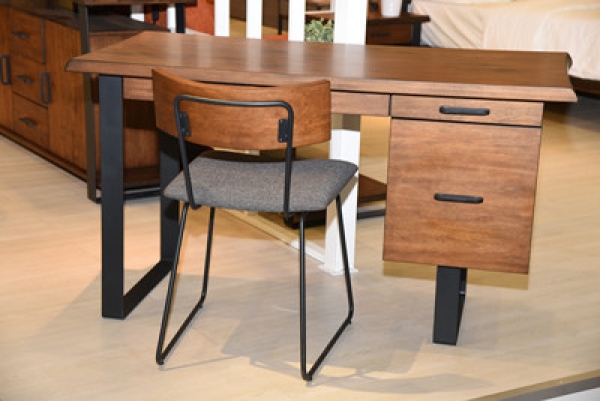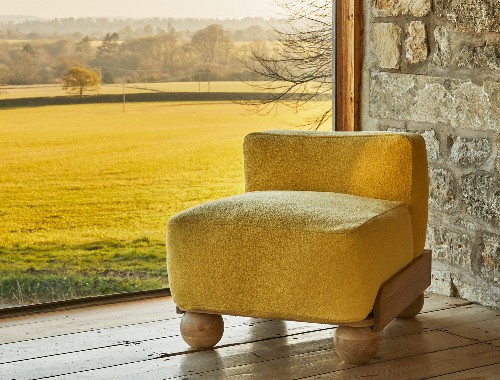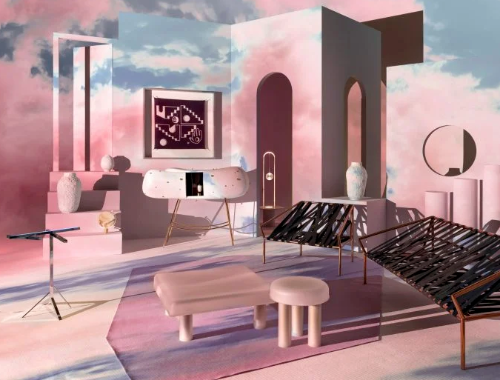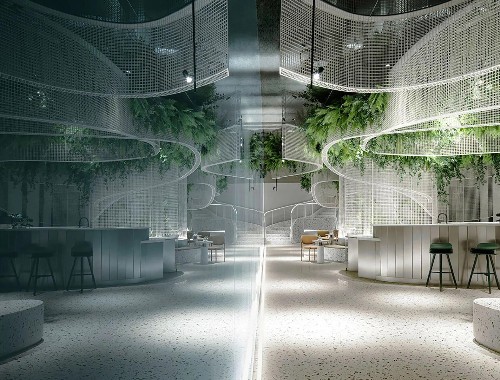Nurturing Design In Southeast Asia
Every year, the array of furniture shows in Southeast Asia has never failed in providing new insights on furniture design trends. This year is just the same with the different exhibitions showcasing a diverse range of products. By Michael Buckley, World Hardwoods
The development of furniture design in Southeast Asia has long been a key issue in the development of the furniture industry in each individual country.The drivers and achievements of design vary enormously, and they determine the likely future prosperity of each industry.

It is tempting to summarise the different levels of design importance to, and awareness in, each ASEAN country.All of them are aware of the need for improved design and most of them have initiatives of varying effectiveness. But a simple analysis would be inappropriate because the issue of design incorporates innovation, fashion and tastes but, most importantly marketing strategy and investment.
Yes, developing designs and moving from original equipment manufacturing (OEM) to original design manufacturing (ODM) and original brand manufacturing (OBM) is not cheap. In the modern global furniture trade, it is fair to say that the majority of manufacturers in Asia for export in the past have relied on their buyers for designs.
That is changing.
Country By Country
Having looked at seven international furniture fairs in Southeast Asia in March 2015, it is easy to see the great differences in how design is viewed and encouraged. Much has, of course, to do with the markets to which individual countries mainly sell.
Malaysia is a case in point. Nearly half of all its furniture exports are destined for North America including Canada with products mainly aimed at the lower end of those markets and sold on price.That has been much helped in recent years by relatively cheap rubberwood material sourced locally.
Whereas in Vietnam, which developed its modern furniture industry on the back of Taiwan, Chinaese knowhow and market contacts, did not need to create much of a local design capacity in the last decade of furniture production growth. Vietnam is a highly creative and artistic country, but did not in the past see the needto or cannot afford furniture design schools.
In Singapore, by contrast, the Singapore Furniture Industries Council (SFIC) has long seen the need for furniture design courses, competitions and other initiatives to put its companies at the forefront of modern furniture design to give it a competitive edge. It is nearly impossible to keep track of the many design courses on offer in Singapore.
In Thailand, an inherent sense of design has been enhanced in the furniture industry by Japan where the masters of furniture design have worked for centuries, as also have the traditional Chinese furniture makers in Shanghai. Japanese furniture industries and traders appear to have migratedtheir business to Thailand when domestic manufacturing became too expensive, just as German companies did to Eastern Europe.
That leaves Indonesia and the Philippines where design runs in the veins of the people whose affinity with nature and the forest has provided a vast pool of skills for working in wood and design talent.
Market Influence On Design
But let’s go back to the markets, because they are changing too.The US is coming out of recession, but furniture sales held up somewhat as renovations of existing homes and furniture replacement supplemented demand after new housing starts collapsed in 2008. That has helped keep Malaysian exports in place but has not done much for new models.
The stagnation in Japan in recent years could have badly dented Thai business shipments, but quietly the regional development of Indochina, (Cambodia, Laos and now Myanmar), have shored up the Thai industry.
Vietnam has benefited from some good market pockets in Europe but also diversified its markets. Indonesian still thrives on its teak furniture business and the Philippines on craft, rather than wood products. But all ASEAN producers are benefiting from the growing demand from domestic markets within ASEAN itself (600 million people) and Asia as a whole.
That also changes the dynamics for design-led furniture, so as markets shift, the industry must revise and re-assess its design parameters.
2015 Furniture Trends
‘Wood in disguise’ might be a way to describe one of the most important trends today.Wood of whatever colour and hue is being dark stained and painted or veneered to the extent that the original wood colour and grain is almost indistinguishable.
There is one historical reason for this in Southeast Asia—the source of rubberwood (in fact,rubberwoodhevea is native to South America).It is difficult to disguise the tell-tale finger joints in rubberwood, so staining has long been a solution.
At the Malaysian International Furniture Fair (MIFF) in Kuala Lumpur, there were many companies in the Muar (Johor) group that have turned to veneer, such as white oak, black walnut, ash and beech to cover table tops and cabinets while still using rubberwood for the non-show wood.
White paint is an alternative, and very much less furniture today shows the natural grain and colour of Rubberwood. In Singapore at the International Furniture Fair Singapore (IFFS), Step Furniture from Malaysia had a fine display of American Tulipwood furniture which they have turned to as an alternative, which does not need finger-jointing due to its long lengths, nor so much edge-gluing due to its wider widths available.
In Malaysia and Indonesia, the emphasis was on furniture made from local native and plantation forests, which in Indonesia include teak and mahogany. In Thailand,teak was a major item together with many of the temperate hardwoods such as oak, maple and walnut preferred in its Japanese markets. In both Singapore and Vietnam, where contemporary furniture was dominant, oak was king with many other temperate hardwoods and softwoods abundant as well as some tropical hardwoods.
The use of materials contrasting with wood is now widespread, giving designers endless new possibilities. Steel, zinc, aluminium, glass and textiles integrated with wood were all seen at the upper-end shows in Bangkok and Singapore. But the one that really caught the eye was some good looking wooden garden furniture that turned out not to be wood at all, but printed aluminium.
We have all seen the plastic rattan and basket weave, weather-proof garden furniture for some long time now, which seem to sound the death knell for rattan.But there is a definite renaissance in real rattan from Indonesia since the ban on raw rattan exports was imposed, and there are some new interesting designs.
One notable trend is the expanding use of plantation acacia which, because of its frequent knots and often dramatic colour variation does not appeal in all markets.Manufacturers such as Regent, Samling and Ferncrest are all using grey stains which seem to be acceptable in Australia, where acacia is similar to some native hardwood species.
One criticism might be to suggest that the Southeast Asia furniture industry, with some exceptions, has been slow to respond to the need for space-saving, easy-storage and flexible furniture for the ever-decreasing size of modern apartments in many countries and in Asia itself. One exception is in Thailand where several producers have to make small low-level furniture for Japan.There are just a few companies which recognise the opportunity, one of which was Simewoodat the Malaysian show.
Perhaps the most notable aspect at the two Indonesian shows, in contrast to all the other Southeast Asian shows, was the widespread promotion of furniture produced from ‘certified legal’ wood. Sistem Verifikas Legalitas Kayu (SVLK) licences and logos were widely displayed.Furthermore, exhibitors included WWF, FSC, The Indonesian Ecolabelling Institute(LEI), SVLK, Switch Asia and a whole host of environmental exhibitors with presentations, not seen elsewhere.
The only conclusion is that the Indonesian furniture industry has taken on board the need to present its environmental credentials and is apparently concerned to comply with new international market requirements and legislation. According to one wood importer, the new regulations introduced in January, require even importers to provide documentation to satisfy SVLK when obtaining import licences.
It is important to note that the government of Indonesia and the European Commission are still working towards the final, long-awaited implementation of the FLEGT agreement whereby SVLK licences will be accepted in the EU as absolute proof of legality of material and products.Meanwhile the Indonesian furniture industry and trade are not waiting around.
The Young Ones
Finally, let’s return to the subject of design. The 2015 shows did see the green shoots of young design emerging with its first leaves. There was an encouraging display of designs in Malaysia by young designers, albeit accompanied by strong words from the Italian chief judge of one major design competition that Malaysia needs to start taking design seriously by engaging design professionals.
There were plenty of creative ideas, as always, for furniture in Bangkok, but the prize for effort in encouraging a furniture design culture in ASEAN has to be awarded to Singapore. At the Singaporean show,an entire hall was a temple of design from all over the region; accompanied by Singaplural an annual design festival.
All the shows had design competitions or exhibits, for example the Furniture and Handicraft Association of Ho Chi Minh City (HAWA), organisers of VIFA, completed its 13th open furniture design competition entitled ‘Hoa Mai’, with the shortlisted and winning entries displayed at the show.
Speaking before the awarding ceremony NguyễnQuốcKhanh from the association said “we cannot expect to create generations of designers in just two to three years, so we always knew this was a long-term project. However we are now beginning to see much more commercially viable designs coming through to a more international level.”
And the bottom line, at least in this region, is this.There are now established and upcoming design studios and practices, who were the young ones of the past, still with plenty to offer. They are the hope for the future.(fdmasia)





 沪公网安备31010402003309号
沪公网安备31010402003309号



